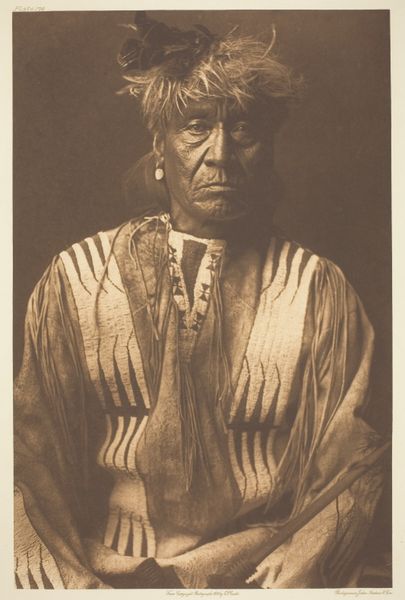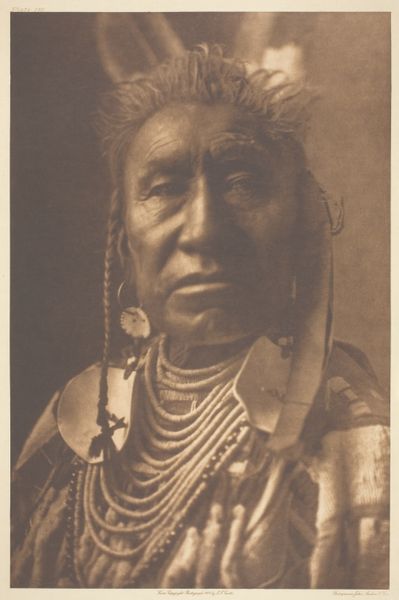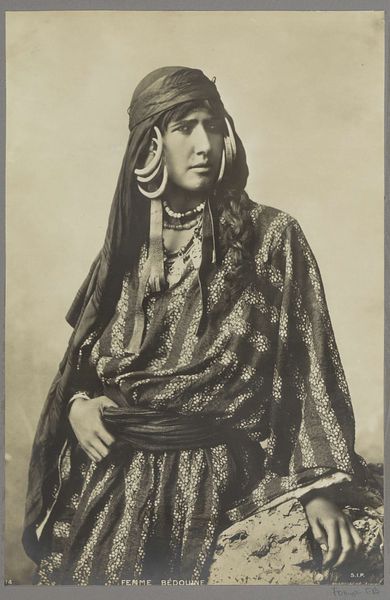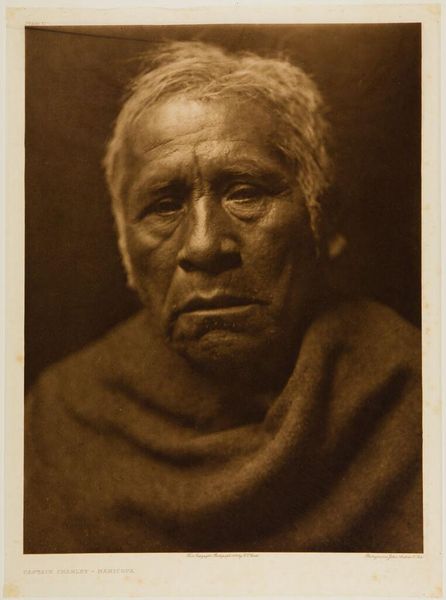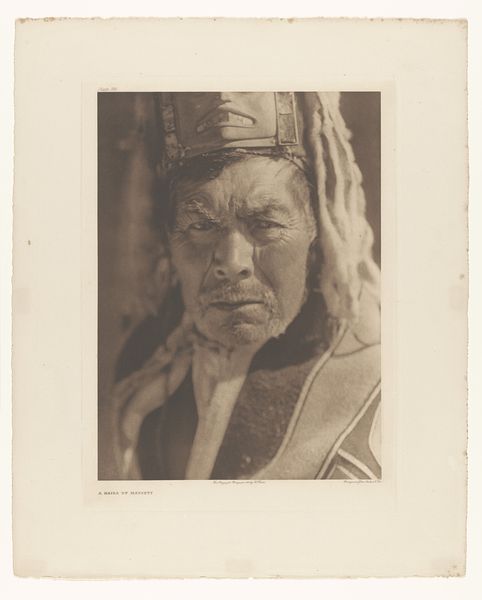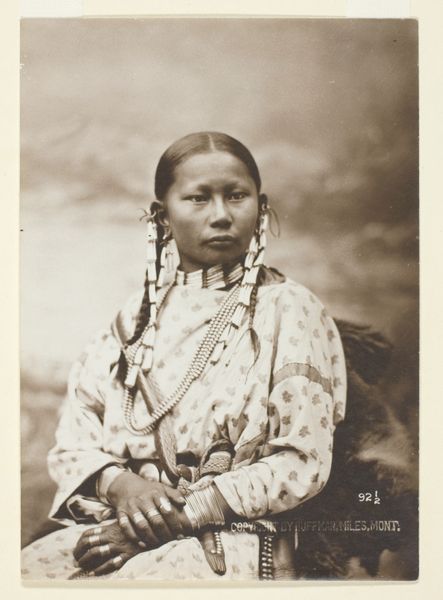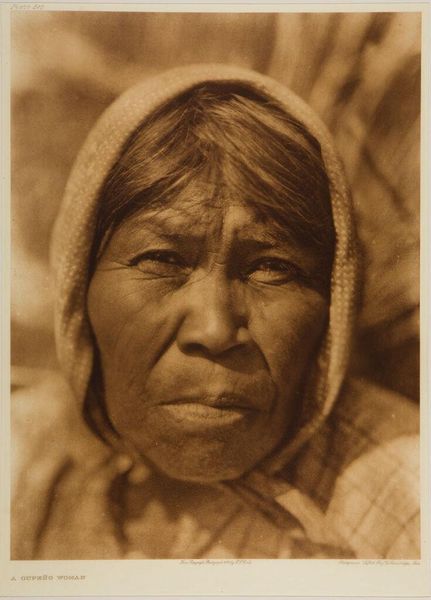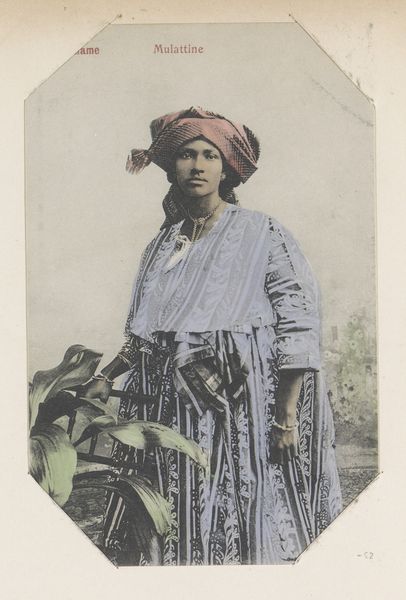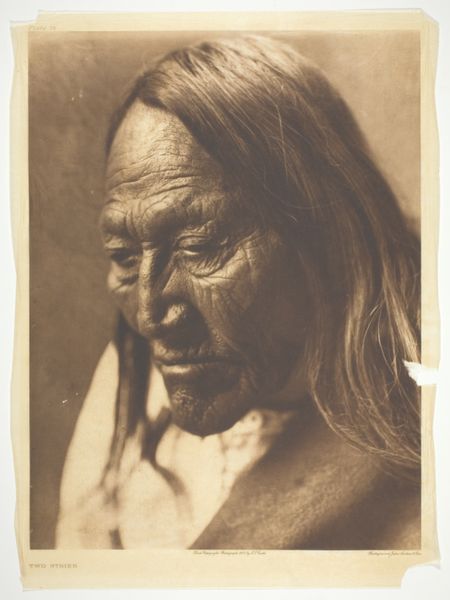
photography, gelatin-silver-print
#
portrait
#
photo restoration
#
low key portrait
#
photography
#
gelatin-silver-print
Dimensions: 39.1 × 26.3 cm (image); 45.2 × 29.6 cm (paper); 56 × 46.5 cm (mount)
Copyright: Public Domain
Editor: This is Edward Curtis's photograph, "Middle Calf-Piegan," taken around 1900. The texture of the blanket is what struck me first. What’s your read on this image, particularly considering Curtis’s broader project? Curator: Curtis aimed to document and, in his view, preserve Indigenous cultures he believed were vanishing. So, we have to consider his work as operating within a specific historical and social framework – one shaped by dominant ideologies about progress and the "inevitable" decline of Native American ways of life. Editor: So, what was Curtis’s actual goal? Curator: Ostensibly, it was preservation through documentation. But preservation, as defined by whom? How did his own cultural biases impact the visual representation? He meticulously staged many of his photos, sometimes even providing clothing and props, essentially constructing a romanticized version of the past rather than a truly objective record. Editor: Is this photo also "staged"? Curator: Almost certainly. Consider the title "Middle Calf-Piegan." It’s a deliberate act of naming, of assigning identity, filtered through Curtis's perspective. How much does this image reflect the sitter's self-representation versus Curtis's vision of "the Indian?" Editor: That makes you question authenticity. Curator: Precisely. The very act of photographing becomes an intervention. These images weren’t simply reflecting reality; they were actively shaping perceptions and contributing to the complex and often fraught relationship between Native Americans and the dominant culture. The institutional role of the museum perpetuates some ideas on native people. What do you think? Editor: That’s an important question; framing Curtis’s photographs isn't straightforward. They can be both beautiful and deeply problematic, shaped by cultural and historical forces. Curator: Indeed. Examining them critically allows us to see the layered politics involved.
Comments
No comments
Be the first to comment and join the conversation on the ultimate creative platform.
